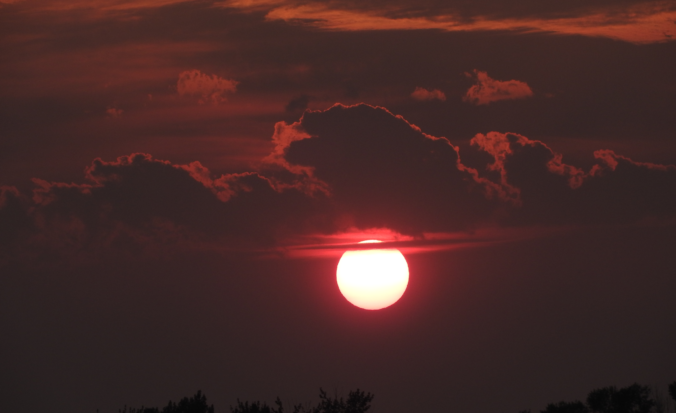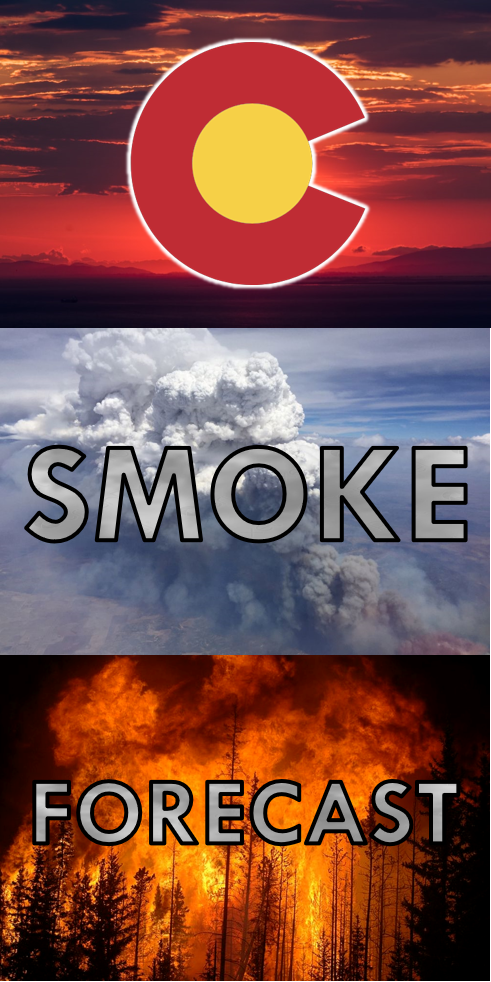Though there is officially still about one week left in summer, meteorological summer ended last weekend. We take a look back at what ended up being a warm, monsoon-deprived summer in which severe thunderstorms lessened wildfire and drought concerns. We also congratulate the 25 winners of our 2018 Summer Heat Contest!
Warm…but far from the warmest
The first half of summer was on pace to be one of the hottest on record in both Boulder and Denver. The heat in June was particularly intense; much of the Front Range was some 4 to 8 degrees warmer than normal in June. Denver tied an all-time record high temperature at 105ºF on June 28th. This was also Boulder’s warmest day of the summer at a cool 98ºF. By the middle to latter part of July, the tides turned as a significant large-scale pattern shift took place. We discussed this in a post a few weeks ago. The shift is outlined below.
The net result was a very hot June, a warm July, and an August that was cooler than normal in eastern Colorado.
Here’s how temperatures each day compared to normal throughout the summer in Boulder:
Notice the particularly cool weather in late July and for a good chunk of August. The red dashed line represents the average temperature anomaly for the entire summer, which was +1.2ºF. Despite how hot it may have seemed at times, Summer 2018 concluded as only the 38th warmest in Boulder’s history. Can you believe it?
If we look at just afternoon high temperatures, Summer 2018 was Boulder’s 17th warmest. Not bad. This at least makes me feel a little better considering how hot it was on so many afternoons…
This discrepancy in ranking between daytime high temperatures and overall temperature points to this summer having relatively cooler overnight lows and thus larger diurnal temperature swings. If we look at the data, 2018 ranked as the 38th coldest since 1900 for average overnight low temperatures during summer (out of 119 summers’ worth of data).
Our cooler nighttime temperatures were driven by a nearly non-existent monsoon season across eastern Colorado. With less soil moisture, water vapor and cloud cover present, the lower atmosphere can cool and warm much more quickly. Arid locations like the High Plains of eastern Colorado are known for large daily swings in temperature. This normality was just more pronounced this summer.
Speaking of the monsoon, or lack thereof, this summer saw a disappointing amount of rainfall over much of Colorado, particularly across the Western Slope. A persistent high pressure pattern developed across California and Arizona throughout much of July and August. This redirected the monsoon moisture plume south and westward. As a result, the mountains missed out on the daily thunderstorms that are usually a staple of the summer season. The map below shows the Standardized Precipitation Index (SPI) for the entire summer. SPI is used to compare precipitation as it relates to “average” over regions with vastly different climates. Arizona did very well this year….western Colorado not so much.
Eastern Colorado, while drier than normal, received bonus rainfall from an extended severe weather season that rooted from the very same pattern which suppressed the monsoon. The graphic below shows the break-down of rainfall across the summer in Boulder.
The multi-day onslaught of severe weather in mid-June produced nearly half of Boulder’s precipitation for the entire summer, along with devastating hail storms for many Front Range locations. Who’s ready for another insurance spike in 2019? Not me.
Across the Metro area, most places received near or just slightly below normal rainfall this summer, generally between 4 and 8″ total. Some smaller areas impacted by repeated severe thunderstorms have recorded 10 to 14″, but these are quite localized.
Overall, the warm and dry summer leaves Colorado in a tough place heading into autumn. Drought now encompasses 71% of the state, up from just 4% a year ago. The aspen trees in the mountains are already starting to change color, many going straight to brown under the stress of drought. Peak fall foliage is definitely going to be a bit early this year.
Looking ahead, September and early October are typically rather dry for northern Colorado. We’re in the period of calmness that lies between the monsoon and the return of the mid-latitude storm track as the seasons change. Case in point: this entire week, one which will see no chance of precipitation and near-record heat every single day in the Denver Metro area.
On the bright side, we do have a developing El Niño in store for this winter. One facet of El Niño that can’t be argued for the Front Range is a higher probability of bigger snow storms in the fall, especially in October. However, there is no correlation between ENSO and total seasonal snowfall in the Front Range mountains or Plains. The more frequent big snows are often surrounded by relatively drier periods during El Niño.

Sea-surface temperature anomaly time series for the NINO 4 and 3.4 regions. The threshold for El Niño is 0.5 on the NINO 3.4 anomaly, so we’re not quite there yet.
Still, we remain hopeful that Mother Nature will deliver the goods this fall and winter. You should too…
Summer Heat Contest Results
Thanks to those of you whom participated in our Summer Heat Contest. The theme of the competition was to predict the extent of the heat in Boulder during the months of June, July and August 2018. Here are the verifications for the 3 required forecasts:
90º+ Days: 38 day (normal is 28 days)
Hottest Temperature: 98ºF (normal is 98ºF)
Longest 90º+ Day Streak: 6 days (normal is 7 days)
Congratulations to Candice on her victory, and to the 24 other winners who had great guesses as well.
- First Place: $50 Amazon Gift Card & 6-month subscription to Premium
- Candice C.
- Second Place: 6-month subscription to Premium
- Wes G.
- Third-Place: 3-month subscription to Premium
- Michael K.
- Any Two Forecasts Exactly Correct: 3-month subscription to Premium
- Oli R.
- Any One Forecast Exactly Correct: 1-month subscription to Premium
- Mario S.
- Carla G.
- Geoff W.
- Jon P.
- Carmen H.
- Amber
- Dan C.
- Joshua L.
- Jeremy M.
- Stu D.
- Sandy H.
- Jamie P.
- Eric J.
- Lauren
- Tim L.
- Lucia
- Holly D.
- Kirsten P.
- Edith K.
- Jim M.
- Eduardo I.
Click HERE view the full spreadsheet with all entries and a scoring summary.
Winners will receive an email with further instructions in the next few days. If you didn’t win, don’t worry. Our 2018 First Snow contest is right around the corner. Look for the contest announcement and your next chance to predict crazy Front Range weather very soon!
Share this post:
.





















You must be logged in to post a comment.